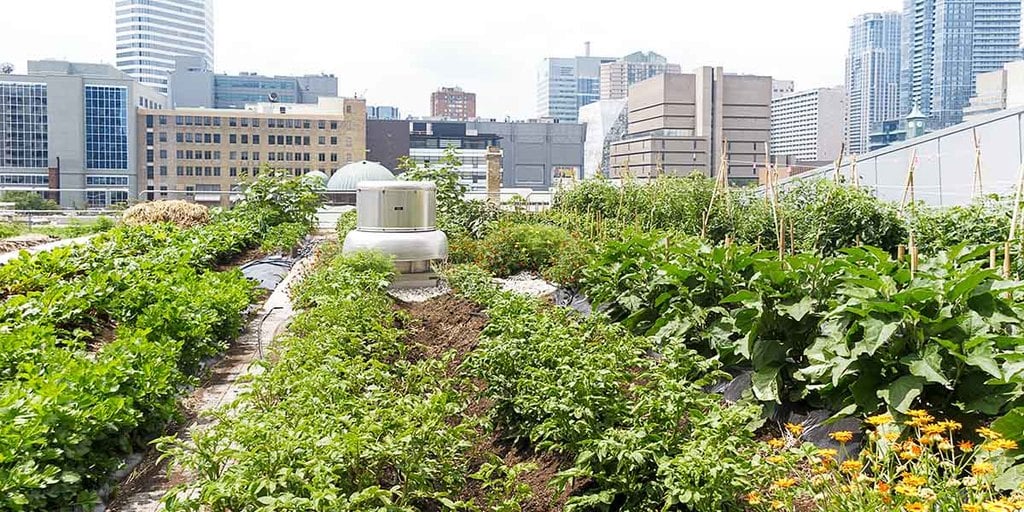City Blooming Fundamentals Explained
City Blooming Fundamentals Explained
Blog Article
Some Known Details About City Blooming
Table of Contents5 Simple Techniques For City BloomingHow City Blooming can Save You Time, Stress, and Money.What Does City Blooming Mean?The City Blooming DiariesGetting The City Blooming To Work
Interested in expanding food up for sale in the City of Chicago? Considering starting a neighborhood garden? Adjustments to the Chicago Zoning Ordinance permit agricultural uses like community gardens and metropolitan ranches in several components of the city. Below is a checklist of frequently asked questions regarding the policies and policies that farmers ought to consider when preparing a metropolitan farming task.
The zoning modification does not modify any type of various other codes handling composting, structure authorizations, purchasing or renting City owned home, organization licenses or environmental contamination. There are existing codes that regulate these concerns and they continue to be in full impact and may apply to your project. Community gardens are generally possessed or taken care of by public entities, public organizations or community-based organizations and kept by volunteers.
Urban farms grow food that is planned to be marketed, either on a not-for-profit or for-profit basis. Due to their business objective, city ranches call for a company permit. Yes. A neighborhood garden is enabled to market surplus create that was expanded on website if the sales are accessory or subordinate to the garden's primary function explained over.
The Buzz on City Blooming
The amount of garden compost product can not surpass 25 cubic backyards at any type of provided time according to the criteria in 7-28-715 of the City's Municipal Code. Since the dirt at most brand-new yard sites requires modifying, compost, soil, timber chips, or various other materials can be gotten to construct or enhance the expanding room.

If a structure license is required then the hoophouse will be taken into consideration an accessory building. You can learn more concerning the structure permit demands by calling the Division of Structures. The 25,000-square-foot dimension limit is planned to protect against a solitary neighborhood yard from dominating a provided block or detracting from the block's existing property or business personality.
The limitation does not put on yards situated in Public Open Area (POS) areas. Can there be greater than one area yard that is 25,000 square feet on a solitary block? Yes. The dimension limitation relates to individual yards, not to individual blocks. No. Fencing is not needed, nevertheless, gardens that have huge car parking areas might be required to mount fence or other landscaping functions.
City Blooming for Dummies
B1 & B2 areas need that all commercial usage activities be carried out inside. R districts limit business task. The regulations mirror the function and intent of the Zoning Code. Is fencing required for urban farms? Yes. Fences might be needed, in addition to landscape design and screening, for specific parking locations and outdoor work or storage locations depending upon location and the certain task happening.
Yes. Urban ranches call for building authorizations and zoning approvals before building and construction. Other kinds of city review may be needed depending upon specific frameworks, tasks, dimension, landscape design, licensing, public health and stormwater management problems. A number of these requirements are identified in the project design or allowing procedure, however, the applicant may be accountable to independently determine particular licenses or allows that may be called for.
Yes. The kind of license is figured out by what is happening at the website. The Division of Company Matters and Consumer Protection can assist establish the specific sort of company permit that's needed. Yes. Off street vehicle parking is needed for the majority of business tasks in Chicago. The called for variety of garage is based on the variety of workers dealing with site and not the square footage of the expanding space.
Some Known Questions About City Blooming.

An urban ranch can sell compost material created on website, however, the procedure has to conform with the laws in 7-28-715 of the Chicago Municipal Code. Aquaponic systems are allowed indoors on city ranches in numerous zoning areas.
Approximately 5 hives or nests of honey might be maintained as an accessory use. Beekeepers need to sign up with the Illinois Department of Agriculture. For more information concerning the suggested zoning modification you may speak to the Department of Real Estate and Economic Growth, Bureau of Planning and Zoning at 312.744.8563.
, which takes place in rural areas at the side of suburbs.
City Blooming Fundamentals Explained
, that look for to create social networks started on a shared ethos of nature and neighborhood holism. These networks can establish by means of official institutional support, becoming integrated into regional community preparation as a "transition town" movement for lasting urban development.
The much more straight access to fresh veggie, fruit, and meat products that may be understood via city farming can boost food safety and security and food security while lowering food miles, bring about reduced greenhouse gas emissions, therefore adding to climate change mitigation. Some of the first evidence of city agriculture comes from Mesopotamia.
Report this page